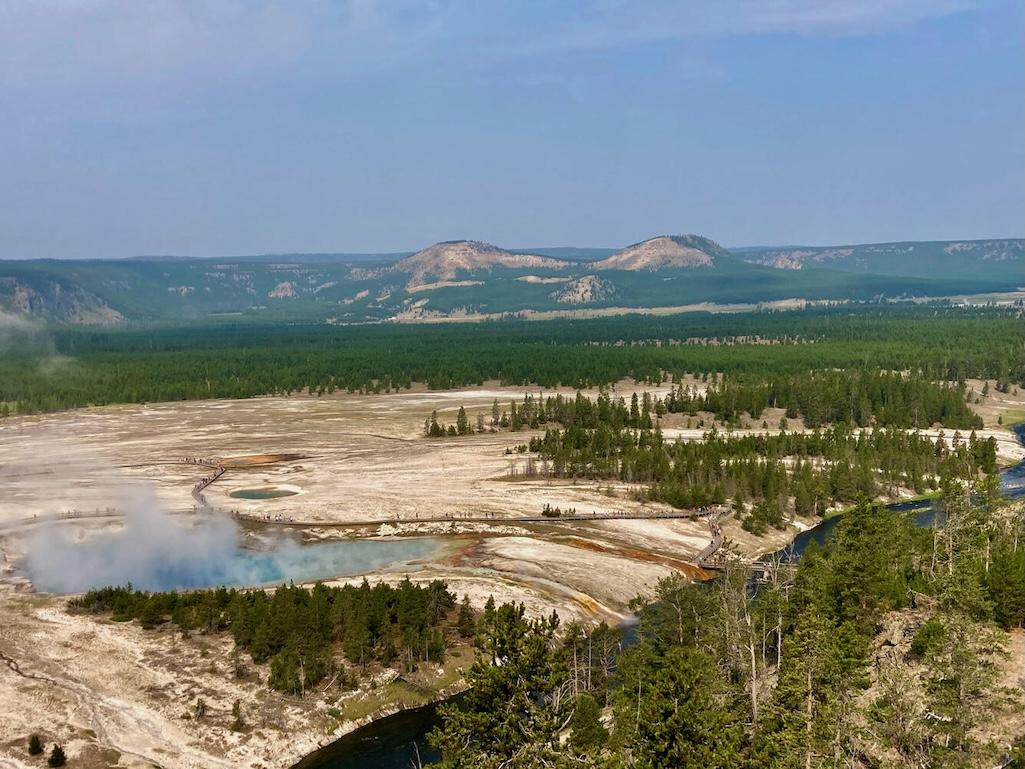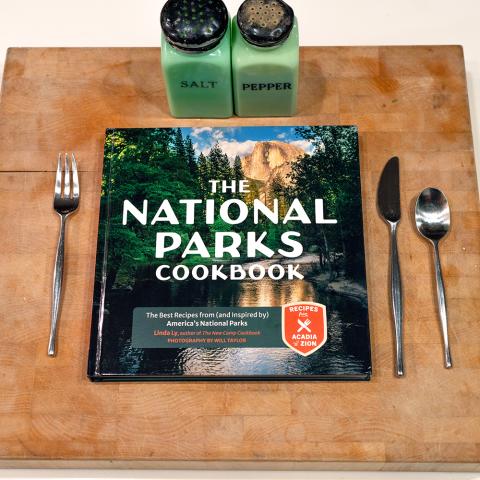Editor's note:Yellowstone Caldera Chronicles is a weekly column written by scientists and collaborators of the Yellowstone Volcano Observatory. This week's contribution is from Michael Poland, geophysicist with the U.S. Geological Survey and Scientist-in-Charge of the Yellowstone Volcano Observatory.
Long before the 2024 explosion of Black Diamond Pool brought renewed attention to hydrothermal hazards in Yellowstone National Park, there was Excelsior Geyser. In the late 1800s, that feature set a standard for hydrothermal explosions.
On the morning of July 23, 2024, a hydrothermal explosion from Black Diamond Pool in Biscuit Basin sent people running for cover. The event was caused by liquid water flashing to steam in the clogged hot-water plumbing system just beneath the surface, and it sent steam, water, mud, and rocks several hundred feet into the air. Fortunately, there were no injuries.
These sorts of explosions are relatively common in Yellowstone National Park, although seldom so well documented. Explosions that left craters about 10 feet (3 meters) across occurred in Norris Geyser Basin—in 1989 at Porkchop Geyser and more recently on April 15, 2024, above Porcelain Basin. Hydrothermal explosions of those sizes probably occur every year to few years somewhere in the vast landscape of Yellowstone National Park but often go unobserved because they occur at night, in the winter, or in the backcountry. Something the size of the Black Diamond Pool event of 2024 probably occurs every few decades in Yellowstone.
Before the 2024 Black Diamond Pool explosion, the largest well-observed front-country hydrothermal explosions were those of Excelsior Geyser in the late 1800s.
Excelsior Geyser is located in Midway Geyser Basin, adjacent to the spectacular Grand Prismatic Spring. The geyser may have formed sometime in the mid-1800s—it was not described by a trapper who visited and described Grand Prismatic Spring in 1839, but was present by 1871, when it was named “The Cauldron.”

Eruption of Excelsior Geyser, Midway Geyser Basin, in 1888. Photograph by Frank Jay Haynes.
Activity at Excelsior Geyser in the late 1800s highlights the spectrum of hydrothermal activity, from geyser eruptions to hydrothermal explosions. Some activity could be characterized as dirty geyser eruptions that were intense enough to eject small rock fragments, while other events involved boulders and large plumes of material lofted high into the air. The first of these large eruptions was apparently witnessed in 1878, but it was in 1881–1882 that well-observed eruptions sent material 30–110 meters (100–360 feet) into the air. Intervals between eruptions were as brief as an hour, and eruptions could last for several minutes. Water discharge from these eruptions was so great that the flow of the Firehole River noticeably increased when the geyser was active, and the plume from some eruptions could be seen 160 kilometers (100 miles) away because the steam created clouds. Park Superintendent Philetus W. Norris thought the eruptions sufficiently impressive for the feature to merit the name “Excelsior.” Tour guide Nestor Henderson described the activity as follows:
“The close of each eruption was accompanied by violent earthquake shocks that tore down the geyserite walls and added much both to the danger and [to the] sublimity of the spectacle. These masses of broken wall were at each eruption hurled into the air several hundred feet above the topmost waves, clashing together in their descent into the yawning abyss with a deafening noise that was most terrific.”
The geyser went dormant by late 1882. While it might have erupted once or twice sometime between 1883 and 1887, activity resumed with vigor in 1888. During a series of eruptions, some of which were photographed, rocks 30 centimeters (1 foot) across were thrown a distance of 150 meters (500 feet). Impressive eruptions and explosions continued into 1890. The geyser then entered a period of dormancy that lasted almost 100 years (although there may have been some additional activity in 1901).
The geyser sprang to life once more over a 46-hour period during September 14–16, 1985. Eruptions were much smaller than those of the 1800s, but still contained mud, lasted minutes, and were separated by several minutes to about an hour. Since that time, no other activity, aside from some violent boiling in 2000, has been noted. This doesn’t mean that Excelsior is “done,” of course. As with most Yellowstone geysers, Excelsior activity is sporadic and unpredictable. And also spectacular. As Stan Lee would say, “Excelsior!”

Photograph of Twin Buttes in Lower Geyser Basin looking to the northwest, with Excelsior Geyser of Midway Geyser Basin in the foreground. Twin Buttes is a thermal kame that formed when glaciers covered the area, and hydrothermal activity below the ice led to melting and the deposition and cementation of glacial sediments. Excelsior Geyser, the large steaming spring in the foreground, was formed by a series of small hydrothermal explosions in the late 1800s. Photograph by Lauren Harrison, U.S. Geological Survey, July 27, 2021, under permit YELL–2021–SCI–8158.




 Support Essential Coverage of Essential Places
Support Essential Coverage of Essential Places






